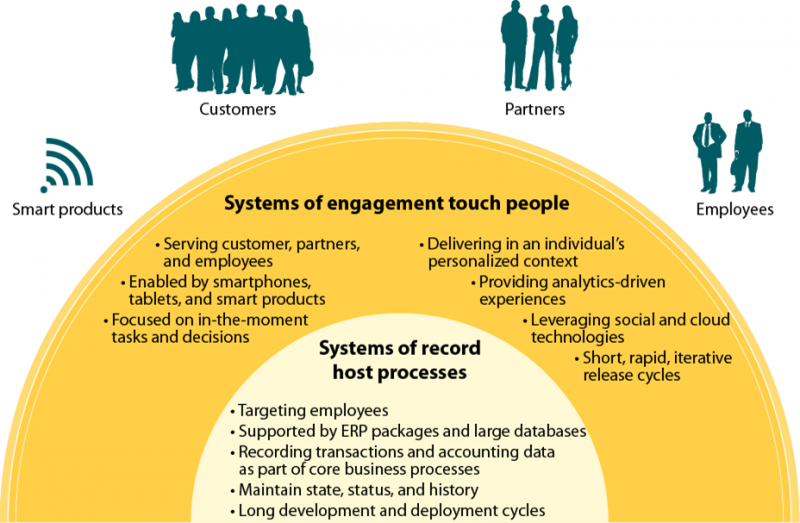A Billion Smartphones Require New Systems Of Engagement
It’s a technology big idea: that organizations can best serve their customers, partners, and employees with new “systems of engagement.” (Thanks to Geoff Moore for permission to define and use his term.) Let us explain why.
First, the logistics. John McCarthy and I spent the last eight months sifting through the patterns that have emerged from firms that have harnessed mobile, social, big data, and cloud technology: 100 conversations; 61 interviews with experts; and Forrester surveys of 10,000 business and IT decision-makers, 10,000 global information workers, and 50,000 consumers. Out of that research we’ve just published a 28-page report for Forrester clients that we will deconstruct and re-assemble via blog posts over the next few months.
We began by looking for the unintended consequences of a successful mobile app, expecting to find some best practices in experience design, middleware APIs, server deployments, app development, and organizational alignment. We found those things and captured them in the report. But we also found something more important: a new ability to empower customers, employees, and partners with context-rich apps and smart products to help them decide and act immediately in their moments of need.
Systems of engagement are different from the traditional systems of record that log transactions and keep the financial accounting in order: They focus on people, not processes (see the Figure). Instead of screen scraping the hotel reservation system and calling it a mobile app, a system of engagement presented on a smartphone will know that a guest has entered the lobby for the first time and probably wants to check in. And by using GPS or location context directly from the device, the “system” will know that when you enter your room, the app should default to the concierge and room service tabs, thus providing immediate access to these hospitality services.

These new systems harness a perfect storm of mobile, social, cloud, and big data innovation to deliver apps and smart products directly in the context of the daily lives and real-time workflows of customers, partners, and employees. The compelling notion of context — the sum total of what your customer has told you and is experiencing at the moment of engagement — is made possible with cloud delivery and predictive analytics applied to a blend of data from device sensors, social feeds, personal preferences, and systems of record.
In future posts, we will introduce you to the data that establishes the inevitability (already 55% of Twitter and 60% of Salesforce.com traffic is from mobile devices), the unintended consequences of a successful mobile app, a new task-oriented experience design skill, the “design for mobile first!” mantra, the competencies of a new engagement center of excellence and “chief mobility officer,” an evolved business technology organization and skill set, how smart product APIs bring dumb products to life, examples galore, and the emergence of new engagement platforms and cloud-connect technologies.
It’s a rich vein to mine, and so worth it. The payoff of systems of engagement is business innovation, differentiated products and services, and profitable growth. And CIOs have a big role to play in bringing them to life.
